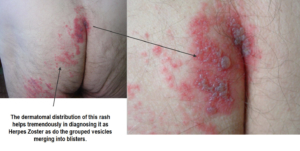Project Description
The Advanced Membership Surgical Course
To be eligible for the Advanced Membership Course you have to have completed the Membership Course or a Graduate Diploma course in dermatology overseas. It is run over one year in two Semesters of 15 weeks each Semester. It covers Skin Cancer Surgery, Skin cancer specific Dermatopathology, Dermatoscopy and some Cosmetic Medicine and Surgery. To practice in diagnosing and treating skin diseases in Australia you need an excellent grasp of these disciplines. If you pass the Advanced Membership Surgical course you are eligible to take the Institute’s Fellowship course now in your 3rd year.
You can apply for next year’s courses by downloading the Registration and Enquiry forms from the course website www.aidadvanced.com
 Full details on the course can be found above.
Full details on the course can be found above.
Course Details
The Advanced Dermatology Course is delivered over two Semesters of 15 weeks each semester.
You can view a short video outlining the course content and delivery below.
The course costs $1700 per year for two semesters study . This allows access to the course websites, webinars and video recordings and repeat access to the Membership webinars of the course held at that time. Candidates can also attend the Membership Weekend Workshop at no cost and submit cases for diagnostic help to the virtual clinical meeting site in the Advanced Course website. There will be an end of Semester examination. Candidates have to pass these examinations to be eligible to take the Fellowship of the Institute which will run in 2023.
Modules have been pre recorded with video instruction of the course material and a video discussion of the module assessment questions. There will be a live webinar every two weeks to discuss any issues candidates are having and to look at cases submitted to the course Virtual Clinical Meeting site. The course website will be www.aidadvanced.com. Registration forms can be downloaded from the Contact or Registration Tabs of this site.
Module Topics are delivered over a weekly cycle. There are regular emails detailing what you should be studying at that time.
The end of Semester examinations are live online and everyone takes them at the same time. They are a mixture of MCQ and Image based questions.
Subjects Covered
Semesters 1 and 2
The Derm Surgery covers lesion recognition, management assessment of different cancers and both non surgical and surgical treatments. We will cover simple closures and Flap and Graft repairs for difficult skin cancers on the face and neck and when to refer for radiotherapy or some of the newer drug therapies for BCC, SCC, Melanoma and Merkel cell cancers.
Dermatoscopy will look at a full course on using the dermatoscope in skin cancer diagnosis.
Dermatopathology will be restricted to skin cancers allowing you to understand a path report and fashion your management of a particular lesion taking all factors into consideration.
Cosmetic Medicine and Surgery looks at areas such as lasers, photodynamic therapy and various types of Cosmetic treatments including Botox, Fillers and photorejuvenation and the medical cases they are used to treat.
The Course website www.aidadvanced.com will also have a Virtual Clinical Meeting area allowing you to submit cases for diagnosis and discussion.
Eligibility for the Course
To be eligible for the Advanced Course you have to have successfully completed the Membership Course.
Build Your Future With The Advanced Course
This course should be very useful to General Practitioners who are hoping to apply for a training position with the Australiasian College of Dermatologists or for Fellowship of the Skin Cancer College Australasia.
COURSE TUTORS
Join Over A 1000 of your Colleagues Enjoying Aid Educational Now
Become Part of the Australian Institute of Dermatology to Further Your Career.

